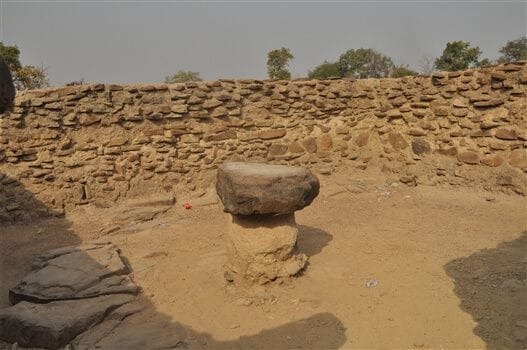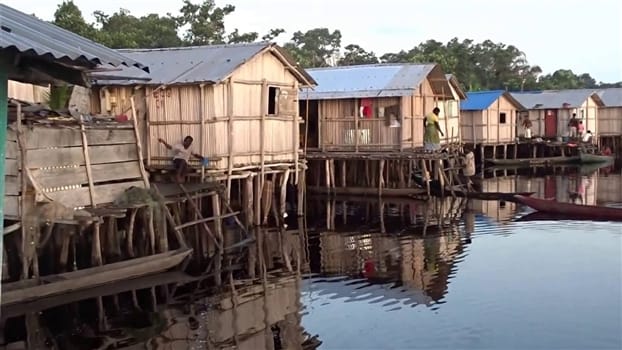The Sacred Charm of Larabanga Mosque - a spiritual journey to remember
The Larabanga Mosque, possibly the oldest in Ghana and potentially all of West Africa, is a unique architectural marvel and spiritual centre for the Islamic community. Sitting within an idyllic village and the captivating West African landscape, it’s frequently referred to as the “Mecca of West Africa”.
Brief History of Larabanga Mosque
The roots of Islam in the Northern Region of Ghana go back to the 10th Century AD, when it made its way into Africa via Egypt. The religious expansion aligned with the trans-Saharan trade routes, stretching its influence further west and south. Islamic merchants, Mande fighters, the Almoravids, and Berber Dynasty missionaries often used these routes. This cultural blend played a big role in Islam’s growth in the region. Stopover points along these trade routes and conquered territories became grounds for conversions to Islam.
The Larabanga Mosque stands as a testament to the spread of Islam from Egypt to Northern Ghana via Saharan trade routes. Constructed in the 17th century, this remarkable building offers a great insight into a transforming period in religious history.
Local legends attribute the construction of this architectural gem to Ayuba, a Moorish trader journeying through the Sahara in 1421. As the story goes, he stopped by in Larabanga for an overnight stay, during which he envisioned constructing a mosque for the locals. When morning came, the foundation of the mosque had mystically materialised. Using mud and reeds, Ayuba built the mosque in the distinct Sudanese architectural style. Ayuba made Larabanga his permanent home. His last resting place is under a nearby baobab tree, the leaves of which are said to have remarkable healing powers.
The Larabanga Mosque is a noteworthy representation of the 15th century trading journey of the traders travelling from North Africa to West Africa. They introduced the Islamic culture and architectural style, which is prominently displayed in the mosque's design. The cultural and religious importance of the mosque is also highlighted by its two ancient Quranic manuscripts, written on a deerskin and over 800 years of age.
Exploring the Larabanga Mosque
The Larabanga Mosque is a modest 8 x 8-metre construction made of mud and wood. It is the oldest mosque in Ghana and possibly West Africa, and is a remarkable sample of Sudanese architecture. It features four separate entrances for men, women, the village chief, and a separate entrance for the muezzin who invites the community to prayer. The northwest corner of the mosque houses a minaret and a mihrab—a niche in the wall closest to Mecca, towards which the congregation faces during prayer. The extraordinary building is adorned with two pyramidal towers and irregularly shaped buttresses that add dynamism to the mosque’s exterior. You can only admire the rustic elegance of the mosque and absorb the sacred, serene atmosphere. It is one of the eight mosques in Ghana built in this unique architectural style and has been a long-standing place of pilgrimage for Ghana’s Muslim community.
The nearby community offers a glimpse into local customs, traditions and everyday life. People here live closely with the mosque, which is a significant part of their lives.
Conservation and Restoration Efforts
The Larabanga Mosque is an invaluable treasure of history, architecture and culture. Many international organisations have recognised its importance worldwide.
The first renovations took place in the 1970s. Sadly, the initiative didn’t work as expected, starting another chain of unfortunate events. Apparently, the wall strengthening methods used during the first renovation round were not effective enough to prevent humidity from getting into wooden beams. This caused a termite problem, and a massive storm knocked down the already weakened minaret.
The World Monuments Fund, the Ghana Museums and Monuments Board, and American Express teamed up with local artisans to reverse the damage. They masterfully removed the applied cement and replaced it with a mud paste. These construction methods were just like the ones Ayuba might have used over 500 years ago when he built the mosque. Local craftspeople fully renewed the minaret, repainted the walls, and brought the mosque back to its authentic beauty.
Nearby Attractions
Continuing your journey from the Larabanga Mosque, there are several remarkable attractions to see in the Northern region. Mole National Park, Ghana’s largest wildlife sanctuary, is located approximately 40 km from the mosque. It is home to a diverse range of wildlife, including elephants, antelopes, and baboons. Embark on a safari tour or enjoy a rewarding hike with panoramic views of the park.
50 km from the Larabanga Mosque, you will find the Boabeng-Fiema Monkey Sanctuary. This is home to two species of monkeys - the black and white colobus and the Campbell’s mona monkey. Here, you have a unique opportunity to see wildlife closer and learn about ongoing conservation efforts.
Consider visiting the Nzulezu Stilt Settlement. It is another remarkable site to add to your travel list.
Planning Your Trip: Tips and Advice for Visiting
The Larabanga Mosque is in Larabanga town, in Ghana’s Northern Region is approximately 10 km away from the town of Damongo. You can reach this town by public transport or taxi from Accra or Tamale. Renting a car might be the easiest way to get around. The best time to explore the Northern Region and the Larabanga Mosque is during the dry season (from November and April). To make the most out of your mosque visit and avoid crowds, seasoned travellers recommend opting for weekdays. Pack essentials like sunscreen, hats, comfortable footwear and water.
Dress modestly and take off your shoes before entering the mosque. Guided tours are available to explore and show you around. However, note that mosque entry is only for those of the Muslim faith. Be respectful towards the local community and customs, ask for permission if photographing people or places.

Hi, I am Jane and I am a GhanaTRVL Insider.




























Comments